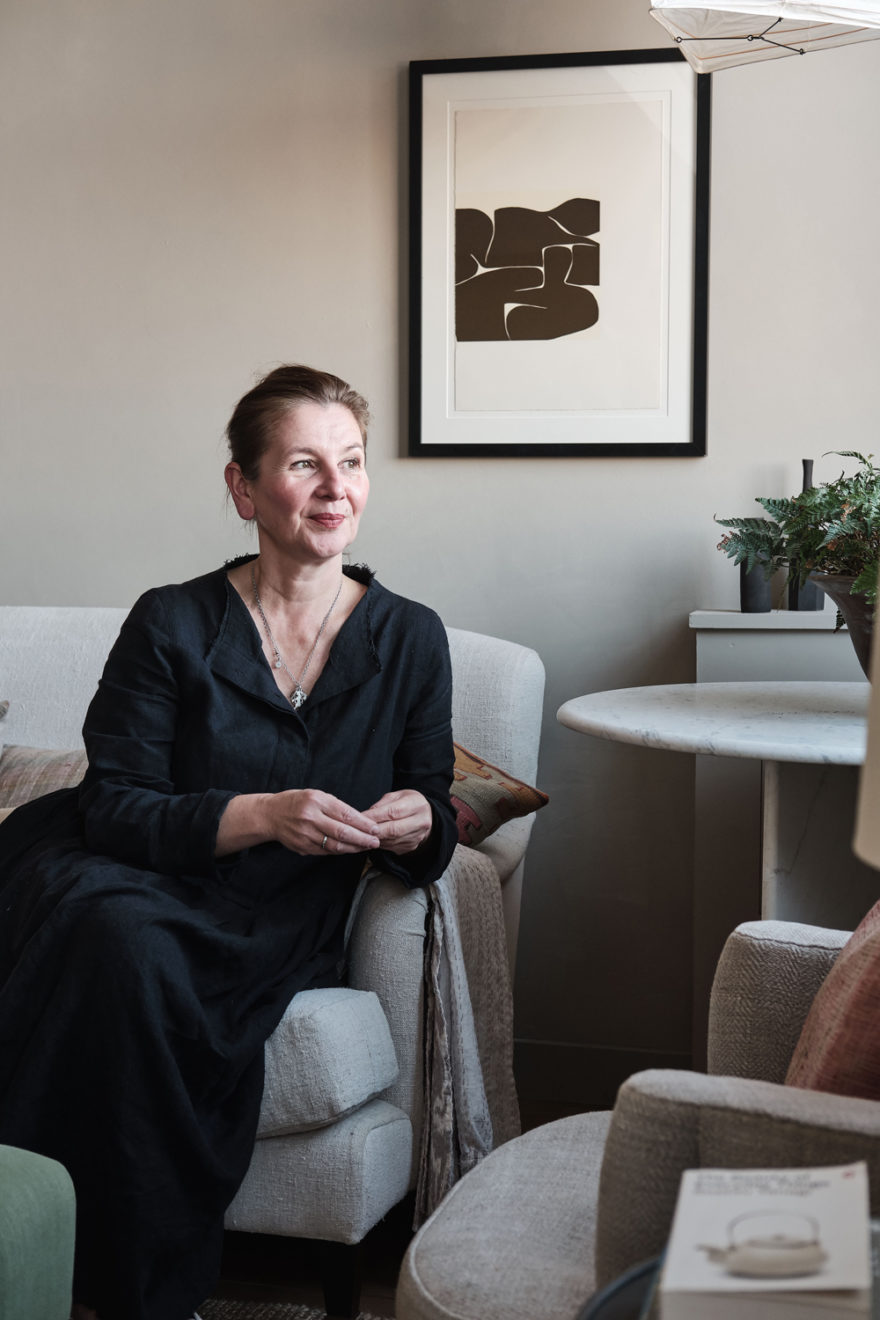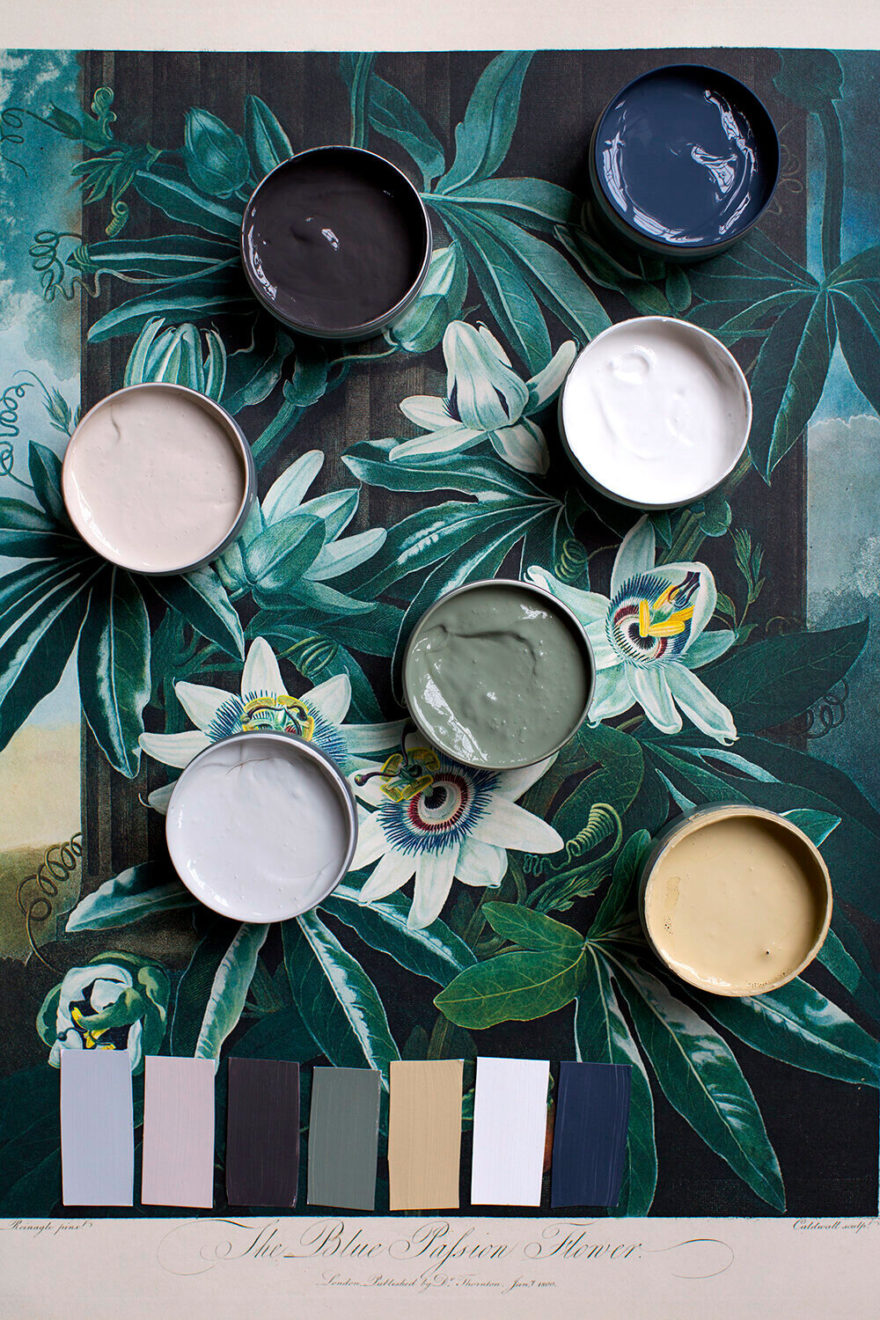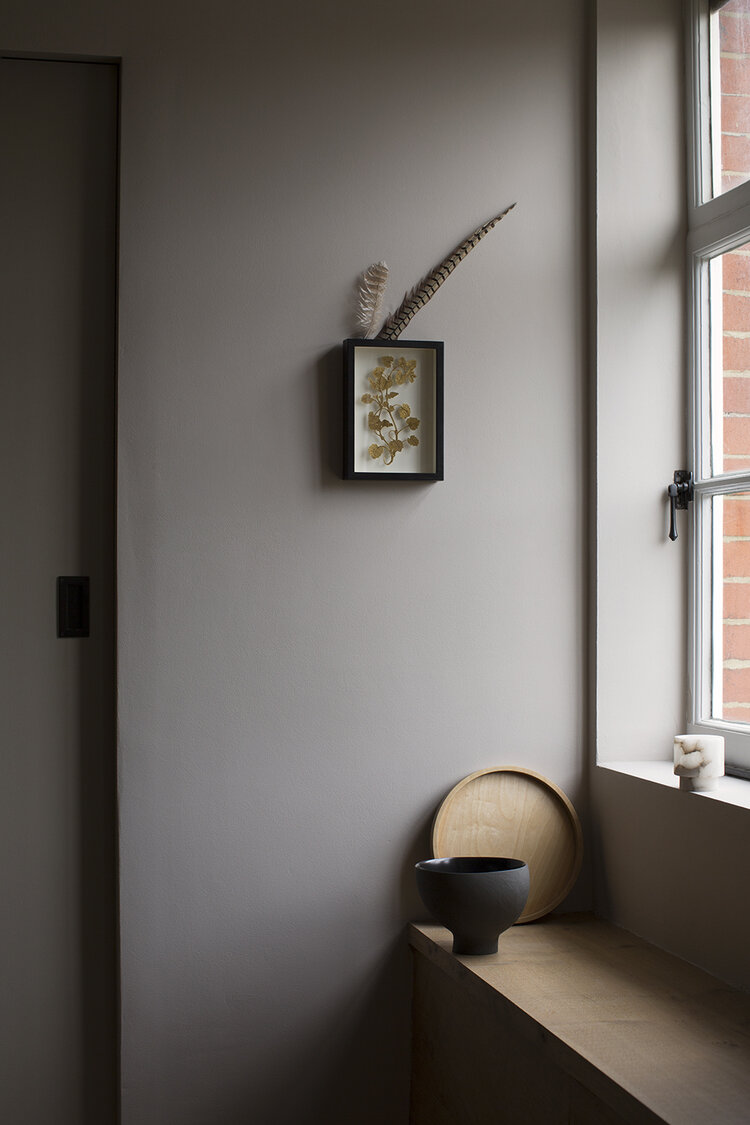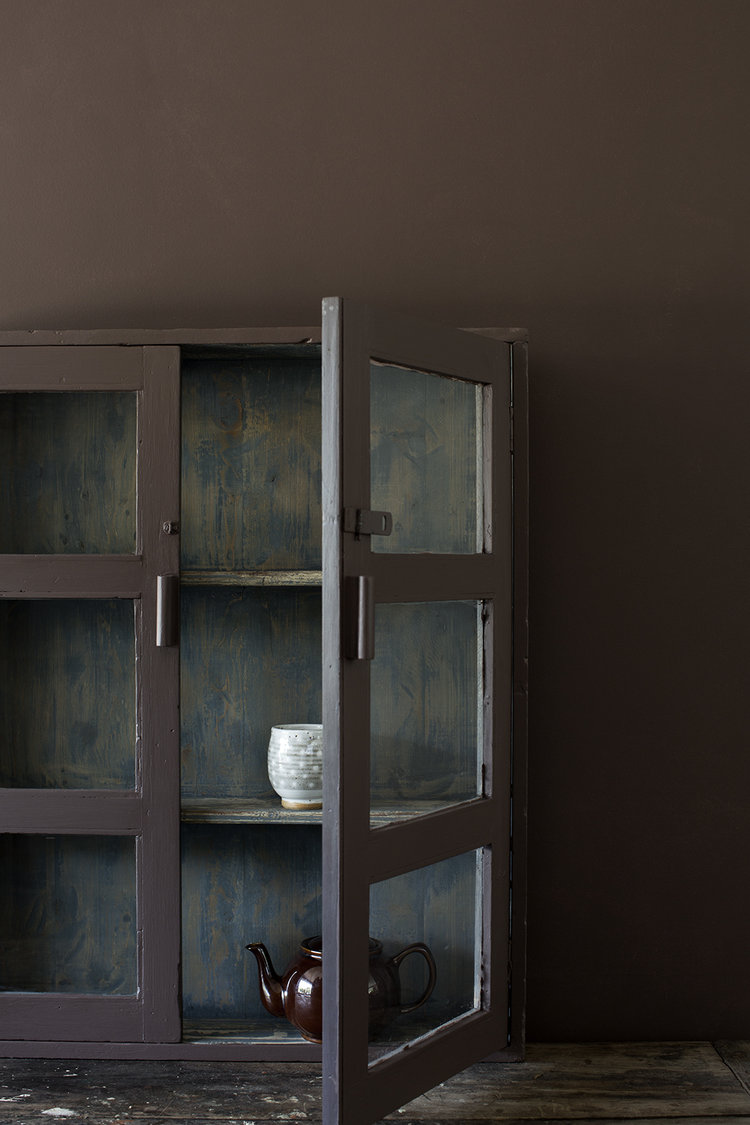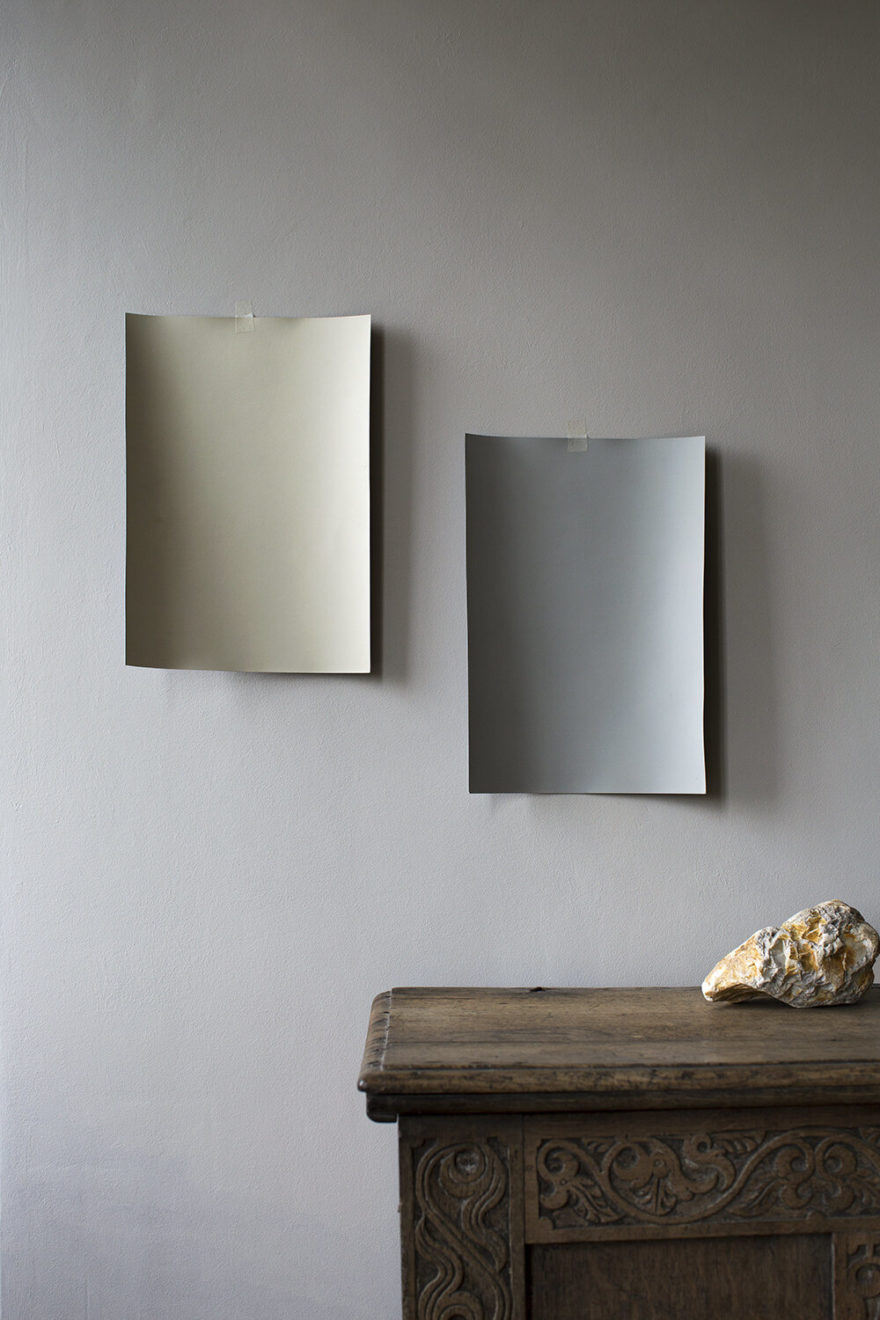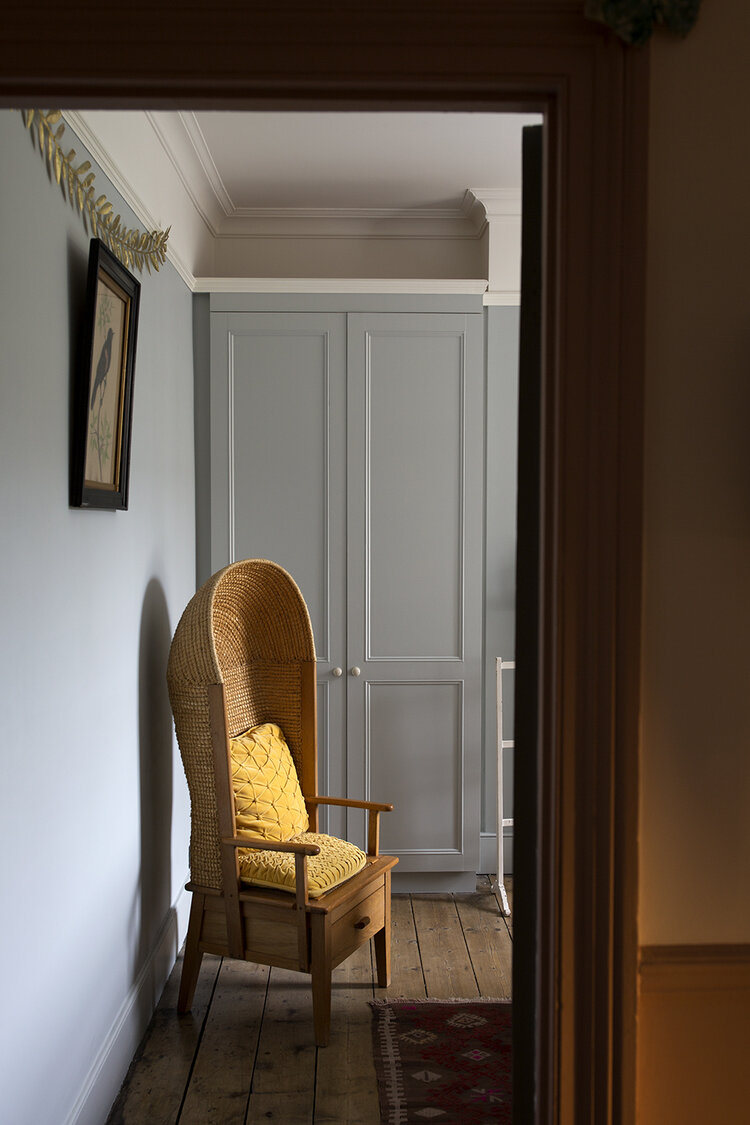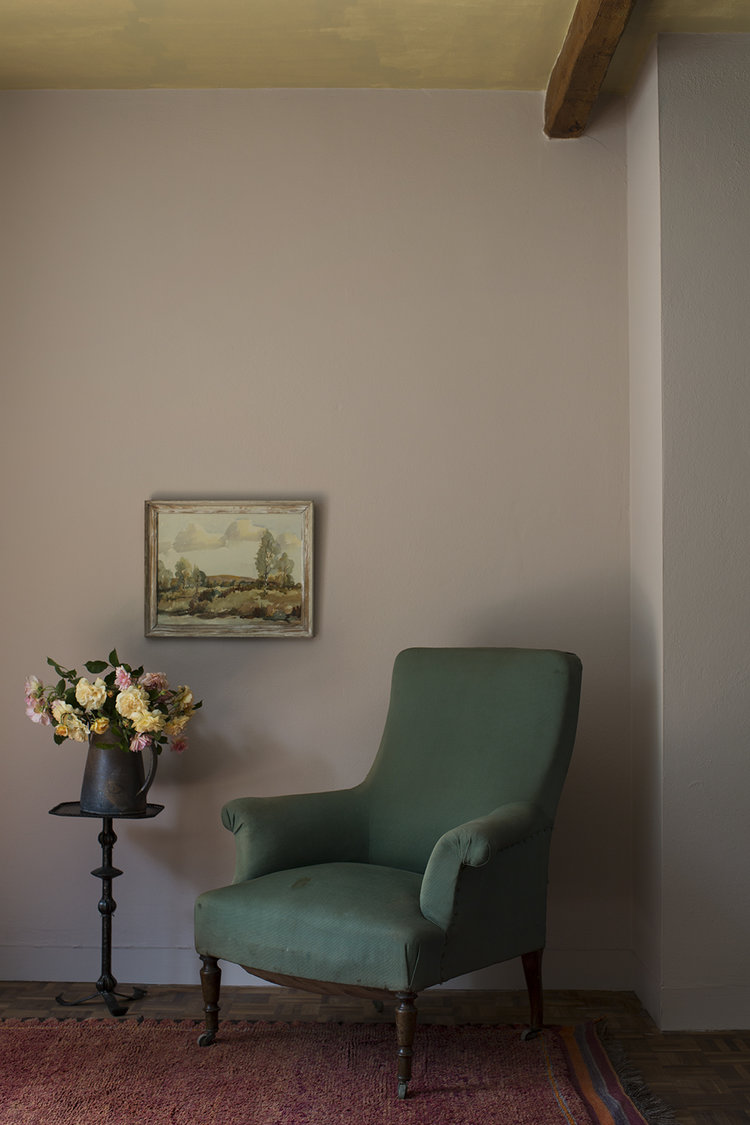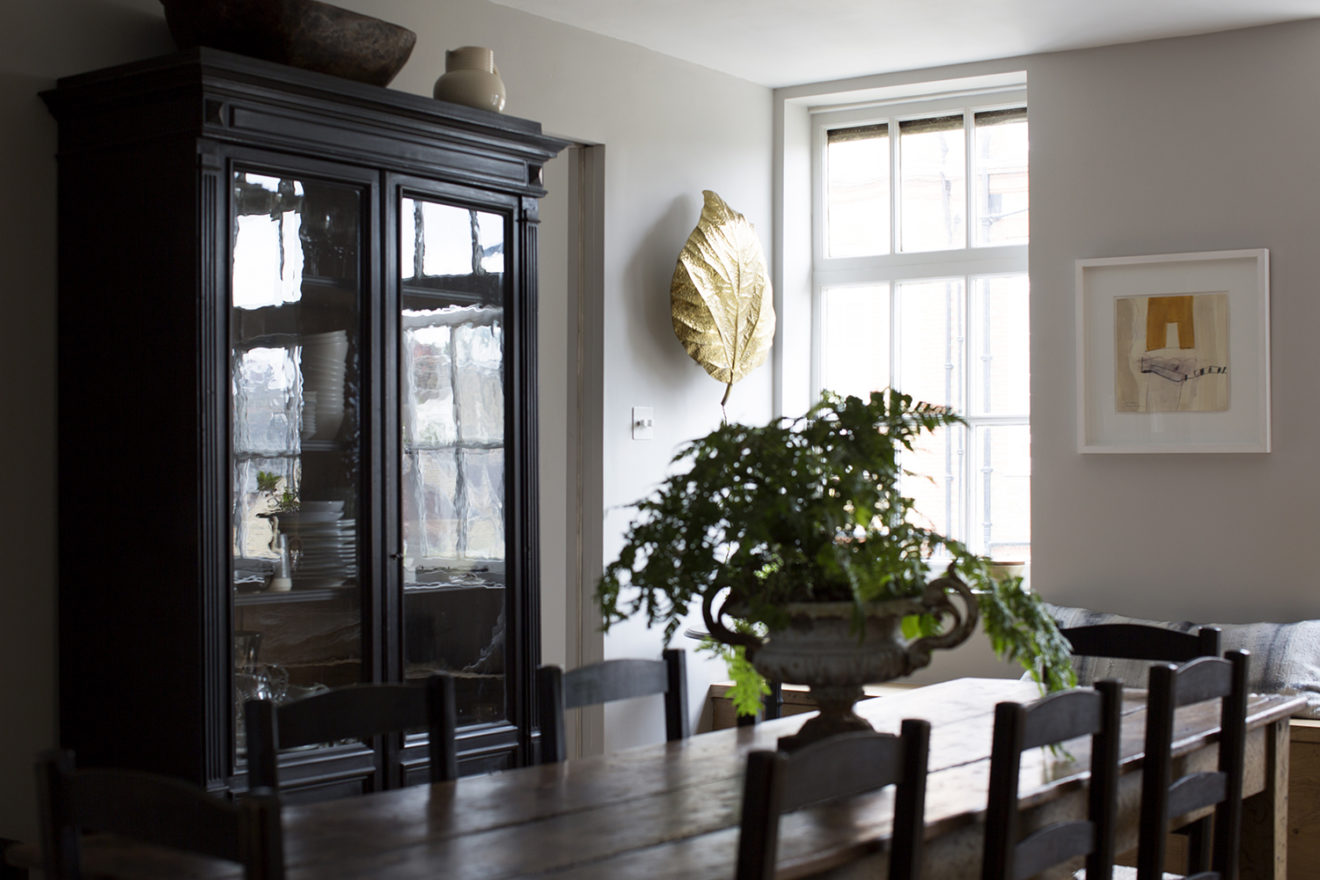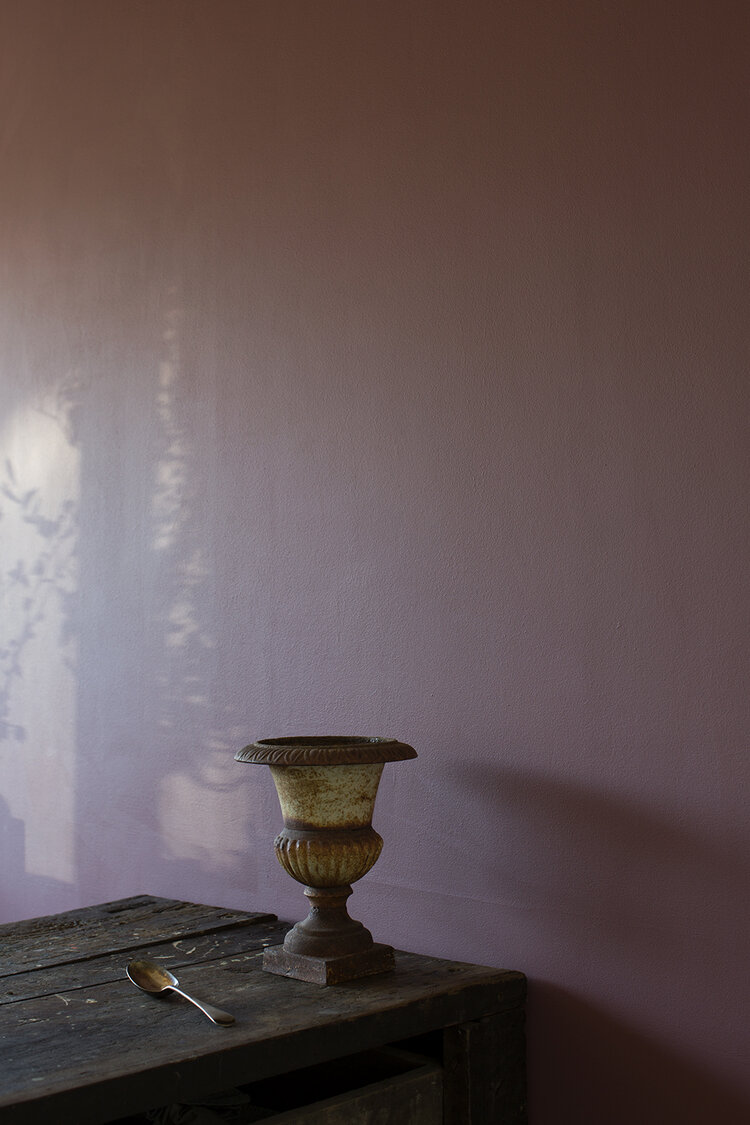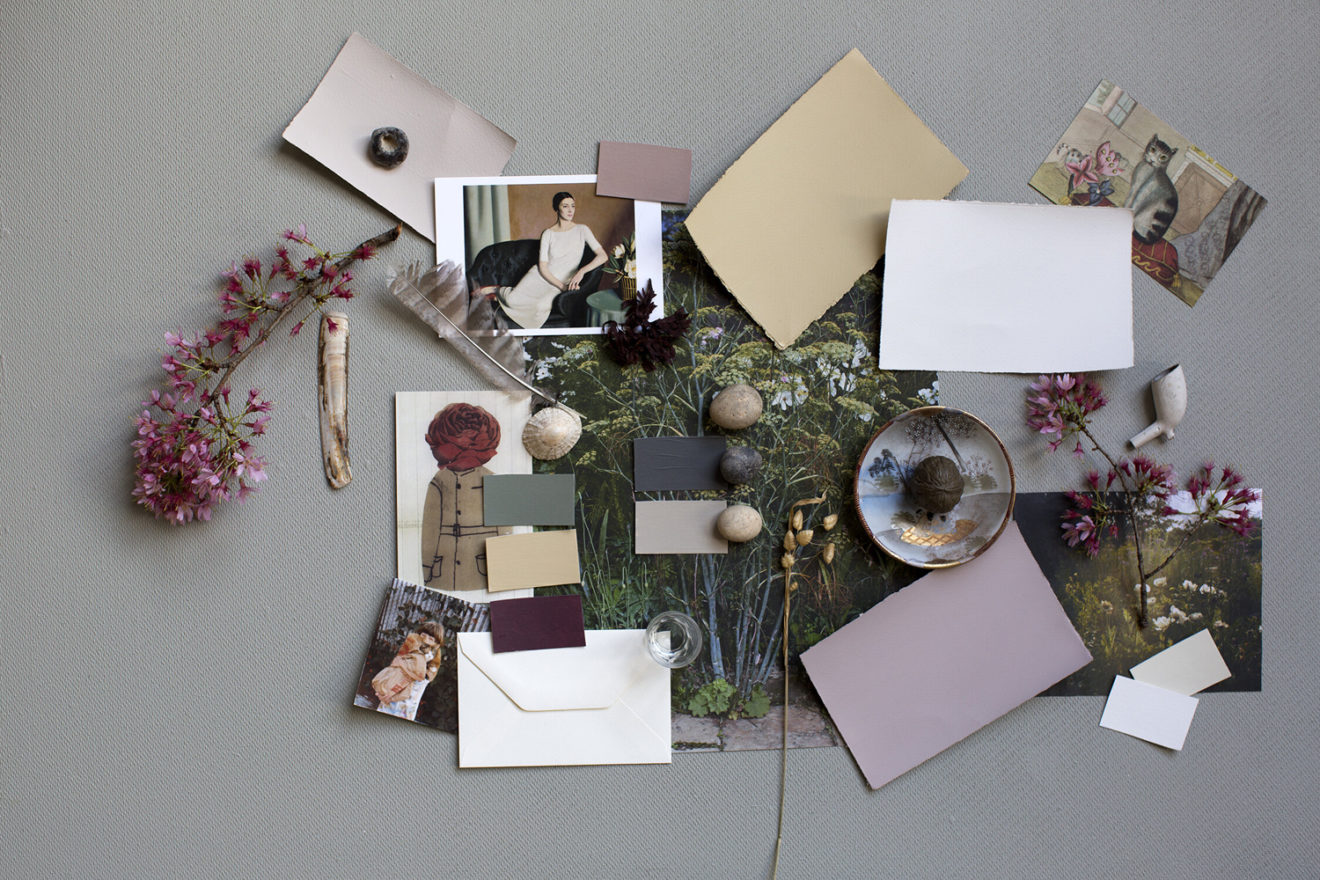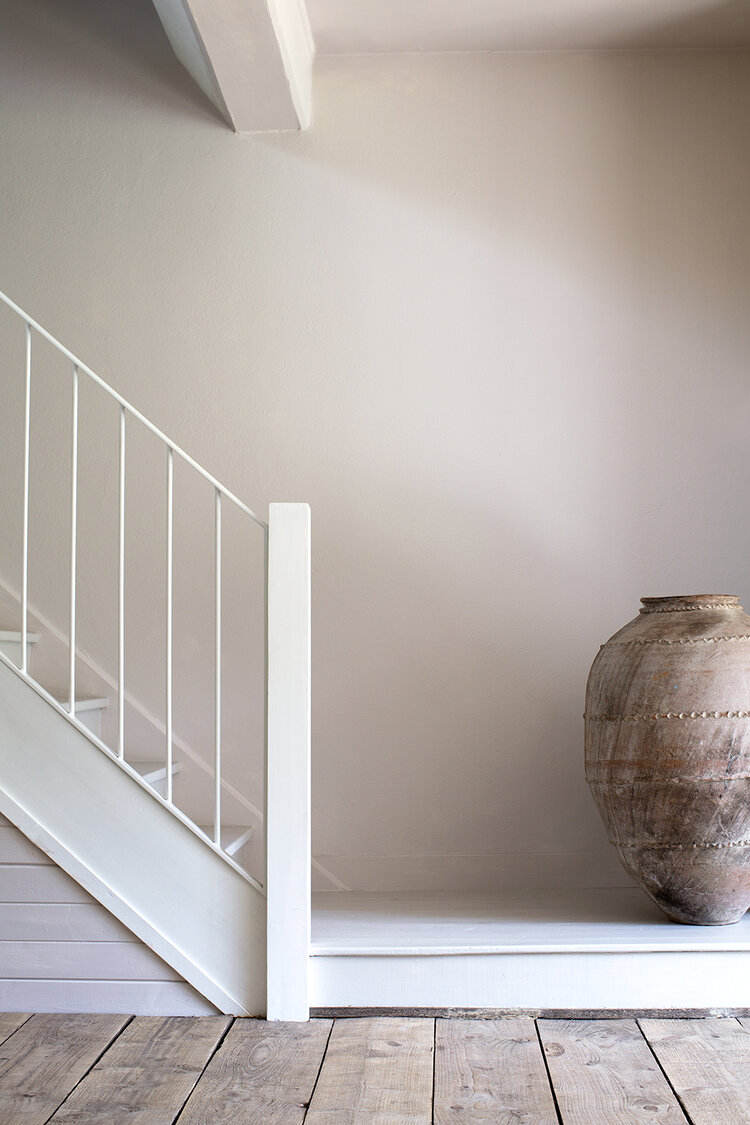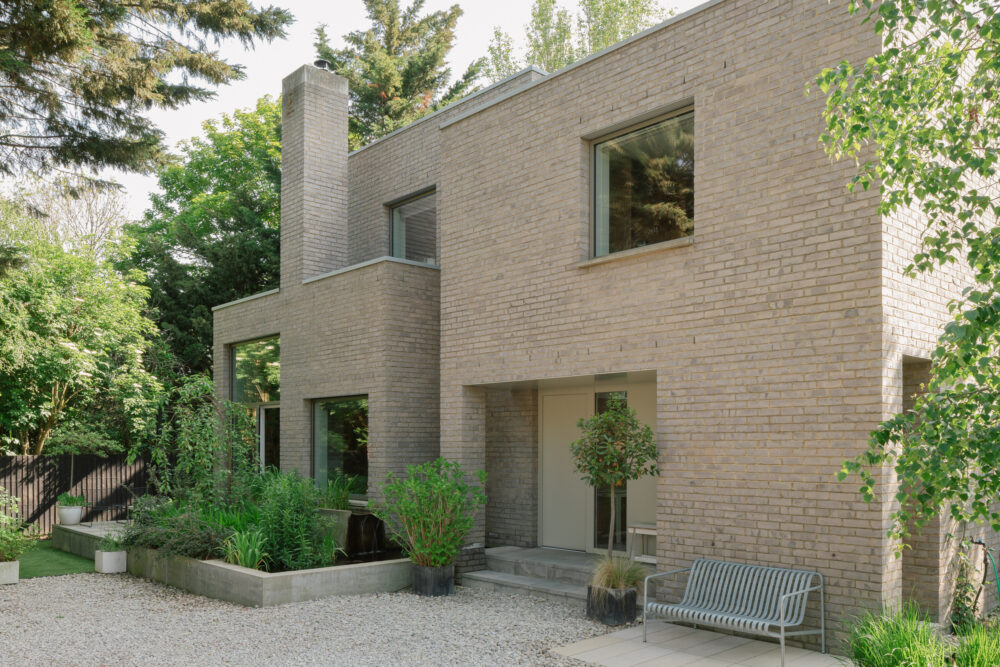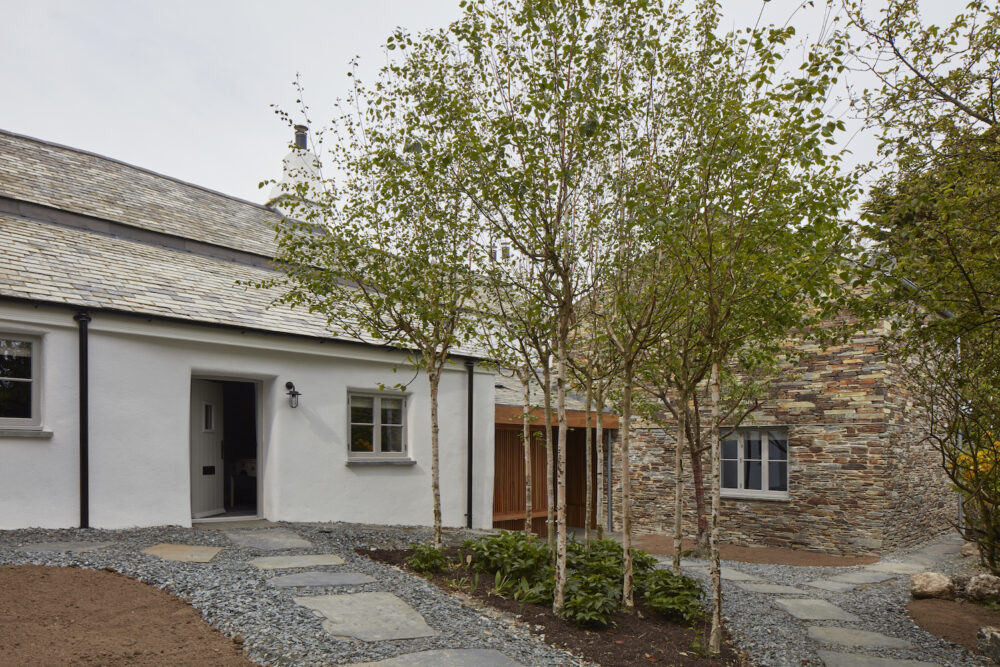Cassandra Ellis: a tutorial in colour
Cassandra Ellis, owner of independent paint company Atelier Ellis, tells us why you should follow your heart when creating a home, and how we can use colour as a catalyst for change. New Zealand native Cassandra Ellis has been mixing paint since the tender age of seven. She grew up in a family of makers – her grandfather a furniture maker, her mother a seamstress – so creativity runs through her bloodline. Since setting up her firm, Atelier Ellis, she has gained a stellar reputation in the industry for her signature quiet (and deliciously named) paint colours and thoughtful furniture designs.
Despite a turbulent year for many businesses, particularly independent ones, Ellis is busier than ever, regularly clocking up 80–100 hours a week and driven by the desire to, in her own words, “help people feel safe, protected and joyous at home.” She is optimistic that the past year of confinement will have given us all the chance to tune into our inner voice and rediscover our own tastes and aesthetic leanings. “The control over the physicality of our space has definitely become more important, because there’s a lot of things which are now completely out of our control. The last time something serious like this happened was World War II, and this is our weird version of that. This so-called cosy comfy life has all been about shopping. But now you’re asking yourself: ‘Why do I even have that?'”
It’s this period of reflection that has afforded us a much-needed opportunity to press pause and step off the treadmill of influencer-led, mass-marketed design, she says. “I hope that people will stop looking at pictures with their eyes and start thinking with their heads and their hearts. I had a [recent] colour consultation customer and, because she didn’t go through the rigour of the pre-questions we asked, she kept bringing up pictures of famous people’s houses on Instagram. She was in shopping mode, shopping for a home.”
Ellis is critical of the industry’s position, lagging behind food and fashion when it comes to prizing sustainability and craftsmanship over profit. “Interiors is so far behind the slow food and slow fashion movements, which are about how you participate, how things are made, how things are delivered, how things are used” she says. “Interiors is so gluttonous and fast, it’s still in its consumptive phase rather than this feeling phase. I was reading Ilse Crawford’s first book, which is 23 years old – and this is when we’re only just getting computers and email, right – and it is still completely relevant today. It’s even worse, we’re even further away from living.”
Ellis is keen to stress is that this process of creating a home shouldn’t be rushed. “A house should evolve. The problem of designing a house all in one go if you’re referencing what you’ve been seeing in the past 18 months to two years, it’s going to look ‘2020’. Unless you’re a very good designer like Ilse Crawford, whose apartment was 15 years old when she sold it and it sold in a day. This creating and investing in your home means you have to do without the cheap fillers to give it that finished look. It’s getting people to dial back their need for purchasing, designing, getting everything done now.”
The designer and academic Ilse Crawford is someone that Ellis references often. She heaps praise on her books – material she revisits when she needs to recentre. In particular, Crawford’s application of Abraham Maslow’s hierarchy of needs in relation to the experience of a home. “My first degree was in economics and psychology and Maslow’s pyramid was one of the first things I was taught about – everything I do is based around that. It’s about what it is you need in order to self actualise and live the correct life, and Crawford took this and moved it onto the five or six senses. But we’ve got so far away from that now, it’s all about the look – you too can live like X. When will people get to the point where they’ll ask ‘Why am I even thinking about that?'”
Individuality lies at the core of the Atelier Ellis brand, and it’s these revelatory moments that Ellis chases, her colours acting as catalysts for long overdue change in her clients’ lives. “Our biggest goal is to get people to say: ‘This is who we are, this is how we like to live, this is what home is to me.’ If that means a customer only ever buys one litre of paint, paints a cupboard Pollen and goes: ‘I’ve got a yellow cupboard, I’m happy,’ then that’s perfect. But if what I’ve actually done is help that person go: ‘I want to live a different life, I want to think about things differently,’ then that’s our marker of success really.”
“Yes, we have to sell enough paint to be successful but it has to be done in a way which answers the point of why we exist, which is to help people understand what home means to them. We just do it through the conduit of colour. It’s like food, isn’t it? You can go to a myriad of restaurants and have roast chicken. One will have a tremendous emotive effect on you and the rest will just be a meal. We’re trying to be the ‘oh-my-god-do-you-remember-the-roast-chicken-we-had-at-X’ – that’s what we’re aiming for, that memory marker.”
This approach to creating a home presents colour as a form of therapy, with our tastes rooted in emotion and our life experiences. All the Atelier Ellis shades are considerately named, representing not just a tangible (handpainted) colour swatches, but the emotion behind the experience of that colour. “There’s one called Morandi Yellow which is from Morandi’s still life paintings, and Brown Betty which relates to the classic teapot – but it’s not about the actual teapot, it’s about having afternoon tea at home as a child with your mother, eating all the biscuits. So, it’s not necessarily about the colours – although the colours are great – it’s about evoking a sense of memory of home. Start by asking yourself what you’d like to feel.”
It’s this, Ellis says, that is key to creating a home rather than a checklist of things cherry-picked from the pages of a glossy magazine or lifted from an influencer’s Instagram post. “Yes, we have to have a bath and a sink or a kitchen, but they don’t have to be in the order or the place that you think they need to be, if that makes sense. They can be how you want them to be.”
Her palette of unassuming hues allow the occupant’s life to take centre stage. So are muted colours the way forward? Not necessarily. Ellis can appreciate punchy bright colours and maximalism, if it’s a true reflection of someone’s taste. “I’m a big driver of personal choice. I can walk into a room and tell you if somebody’s table is too big or too small, or if they’ve got things in the wrong space, or you’ve got too many colours, but it really doesn’t matter. One of my favourite people ever was Kate Spade, and though it wasn’t my aesthetic at all, I just loved reading any article about her and her home, or watching videos of it because I saw the real joy she got out of that space.” It’s something parents should bear in mind when decorating a child’s room, Ellis adds. “We get a lot of people who are shopping for their children’s bedrooms and I say: ‘Have you asked the child?’ It’s a really interesting thing when you start filtering your own child’s creativity through the prism of what you consider to be good taste.”
Perhaps unsurprisingly, Ellis is decidedly anti-Pinterest. “We don’t allow Pinterest boards when we do our colour consultancy, as Pinterest is already filtered – you’re looking at what it wants you to look at, because that’s what everyone else is looking at. Pinterest funnels you down a certain route and all the same images pop up and everybody’s got a smoky pink wardrobe and then they think: ‘I don’t even like pink, why am I here?’. It’s why somebody like Chan and Eayrs‘ houses are so extraordinary, because they don’t buy into something anybody else is doing, it’s completely different. Or Pedro da Costa Felgueiras’ house – it’s like nothing else.”
Refreshingly though, even Ellis herself isn’t immune to indecision: “We’re renovating a Georgian property in Lewes at the moment – our weekend house for the next couple of years until we decide to move down there full-time – and I’m questioning myself all the time. We can’t get big furniture in because it’s narrow, oh and forget the staircase! Oh well, we’ll just have a couple of armchairs and maybe we’ll live a different way,” Ellis shrugs. “It makes you ask yourself: ‘What do I want this house to be?’ I want it to be empty, I don’t want it to be full of stuff. I want it to feel a little bit sprezzatura, which is an Italian word for ‘undesigned’, ‘nonchalant’ or ‘at ease’.”
But how do you tune in to your heart’s desires and drown out distractions? “I would say put down all interiors books and magazines – all of them, don’t open one – and go and look at some art instead. Whether that’s sculpture, paintings, a garden – look at it and find out what is it that brings you joy. And then make a physical moodboard and start analysing that. ‘What is it that I feel, why did I pick these?’ And from that it will come, it works every time. People get a really strong sense of what kind of space they want to live with, and from that comes a colour palette. I hear people saying: ‘I’ve spent so much money on tester pots,’ and I think if you’d spent a weekend cutting and pasting and looking and reading and thinking, you wouldn’t have had to do any of this. So start with things that stir something inside you.”
According to Ellis, inspiration can strike at any time and comes in the most unexpected forms. “People and clothes are some of my biggest stimulants for how I want to live. I’ve got this picture of Georgia O’Keeffe when she’s quite old, which is hard to explain but it absolutely sums up everything about how I want my home to feel. It could be a still from a film or a photograph of crumpled linen. It’s really fascinating and clients get very emotional when they do it properly because there’s a reason we respond to everything. I think a lot of people don’t think these feelings they experience are valid. That it’s OK to want something other than what they’re seeing. And it’s OK to give themselves permission to create a home that suits them. We just have to give ourselves the time to listen to ourselves, and to not look at what other people are doing. It’s really simple.”

